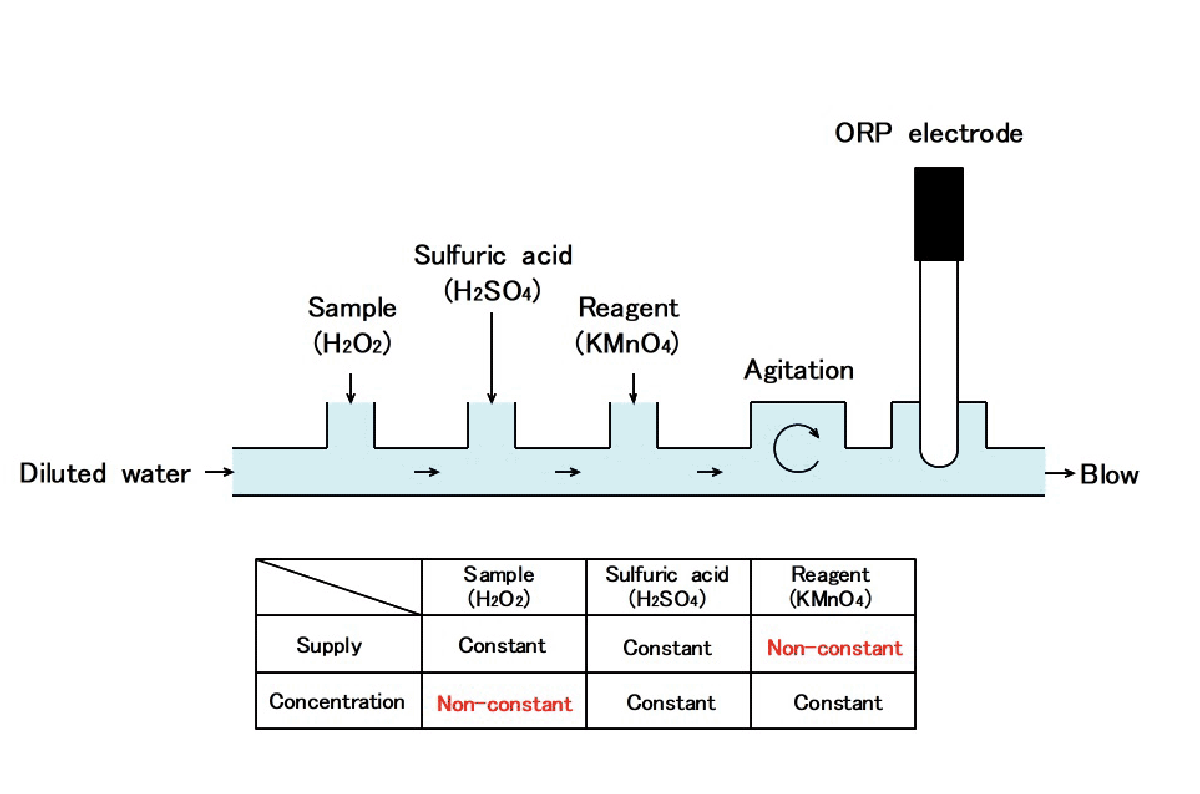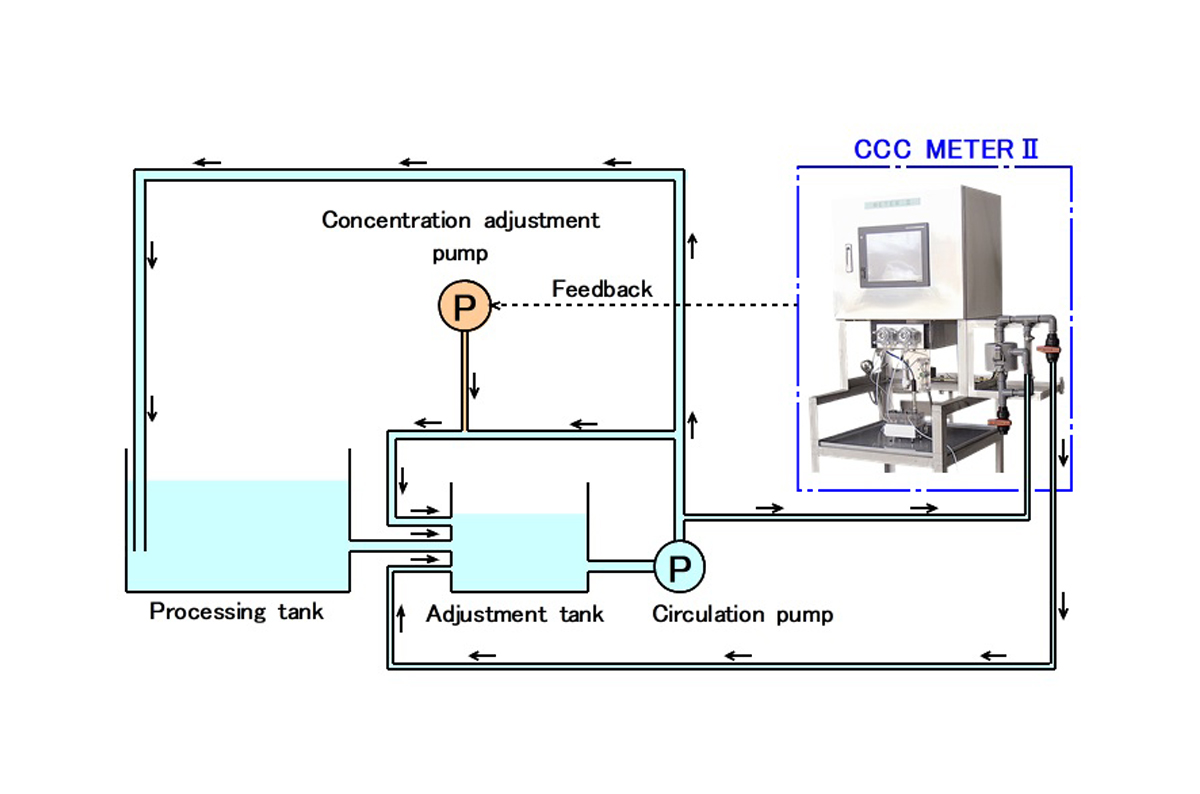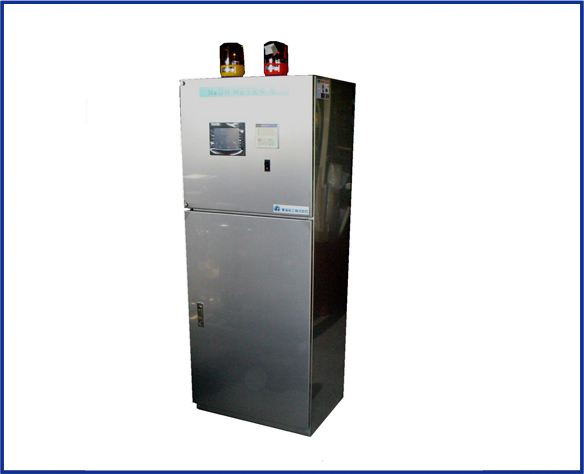



●Fully automated. You can continuously manage various processes and save labor.
●The measurement results can be fed back to various processes. It is also possible to control the concentration.
●You can manage the measurement data on your computer.
When hydrogen peroxide(H2O2)is titrated, the ORP potential (oxidation-reduction potential) changes as shown in Fig. 1 as the reagent (potassium permanganate (KMnO4))) is added. The ORP potential rises as the reagent is dropped. Especially when approaching the equivalence point, the ORP potential changes rapidly. In the case of hydrogen peroxide, it changes significantly around 750 mV.

CCC METER II uses this principle to measure the hydrogen peroxide concentration by the flow injection method.
Flow injection is a method of (1) continuously flowing a sample into a thin tube, (2) injecting a reagent into it and causing a chemical reaction, and (3) measuring the ORP potential and analyzing the concentration.

As shown in Fig. 2, a certain amount of sample(H2O2)is passed through a system in which a constant amount of diluted water is poured. Add sulfuric acid(H2SO4)and reagent (KMnO4)to the solution and measure the ORP potential. The amount of sample liquid(H2O2)supplied is constant, but the concentration (processing liquid concentration) is constantly changing. Therefore, the amount of reagent is controlled so that it always reaches the equivalence point (750 mV). For example, when it is 750 mV or less, the amount of reagent is increased, and when it is 750 mV or more, the amount of reagent is decreased. CCC METER II grasps the amount of this reagent and converts it to the concentration of hydrogen peroxide.

(1) The solution in the “processing tank” is circulated by the circulation pump (“circulation pump”-> “processing tank”-> “adjustment tank”).
(2) During circulation, a part of the solution is sampled to “CCC METER II”.
(3) Measure the concentration of the sampled processing liquid by continuous titration.
(4) If the measured concentration is lower than the set concentration, feed it back and adjust the concentration with the “concentration adjustment pump”.
(5) Perform steps (1) to (4) continuously.
The above is an example of the system. Designed to your specifications.
We will listen to your request and the process you want to realize, and by combining the products, we will provide the system that suits your purpose.
